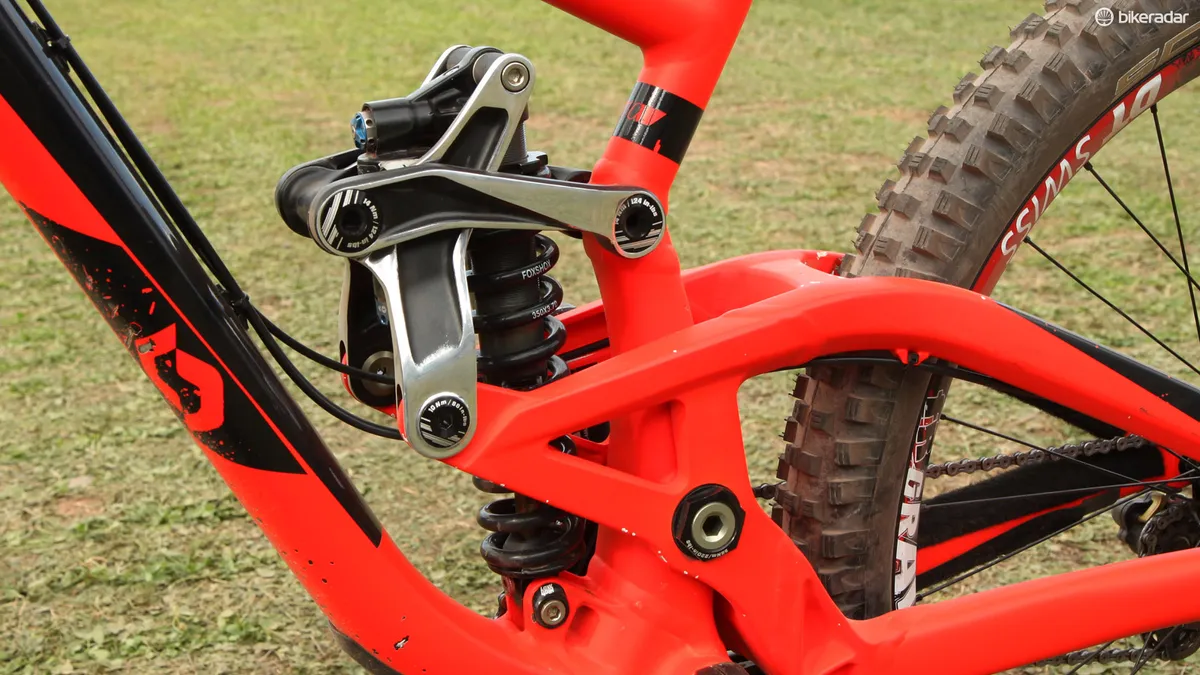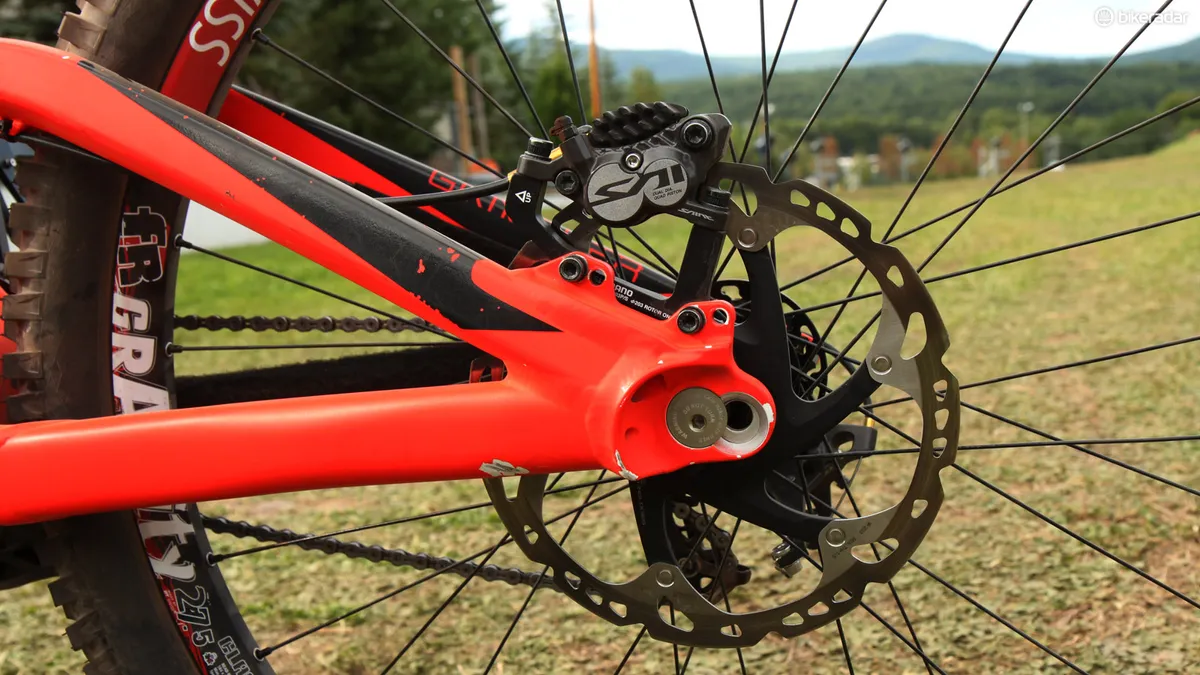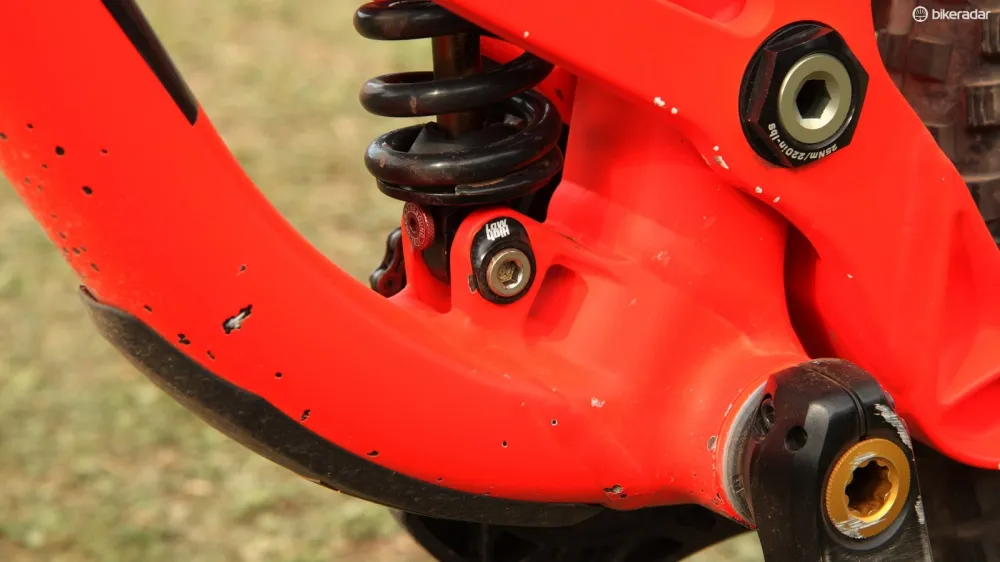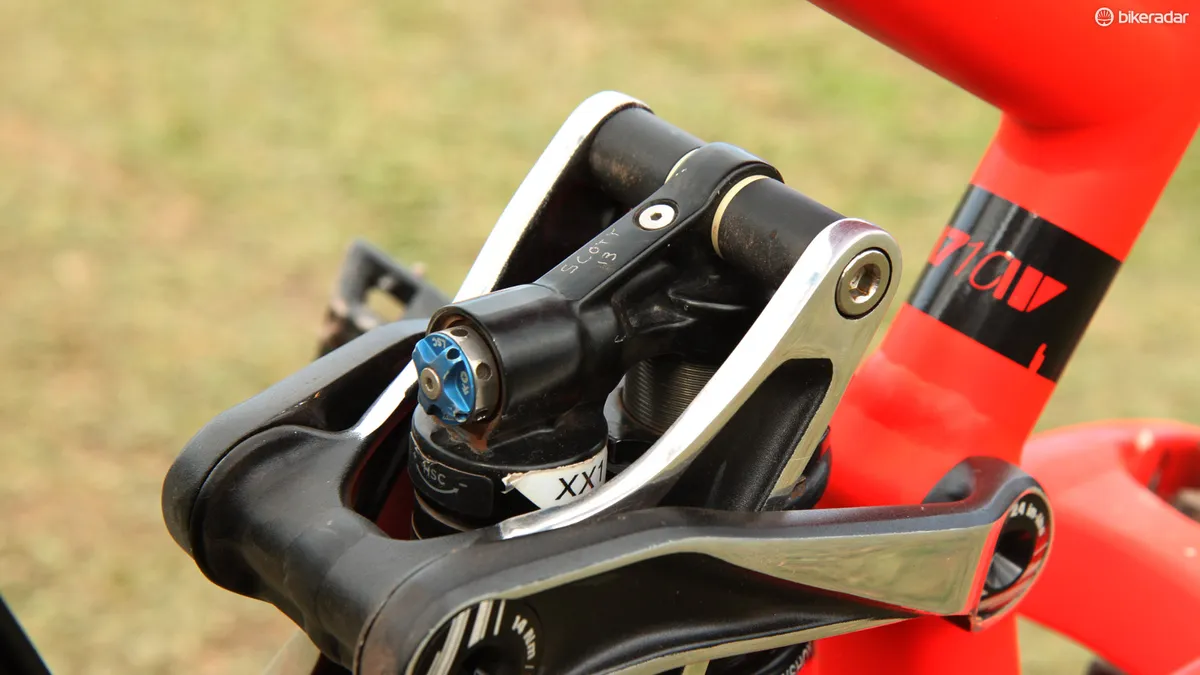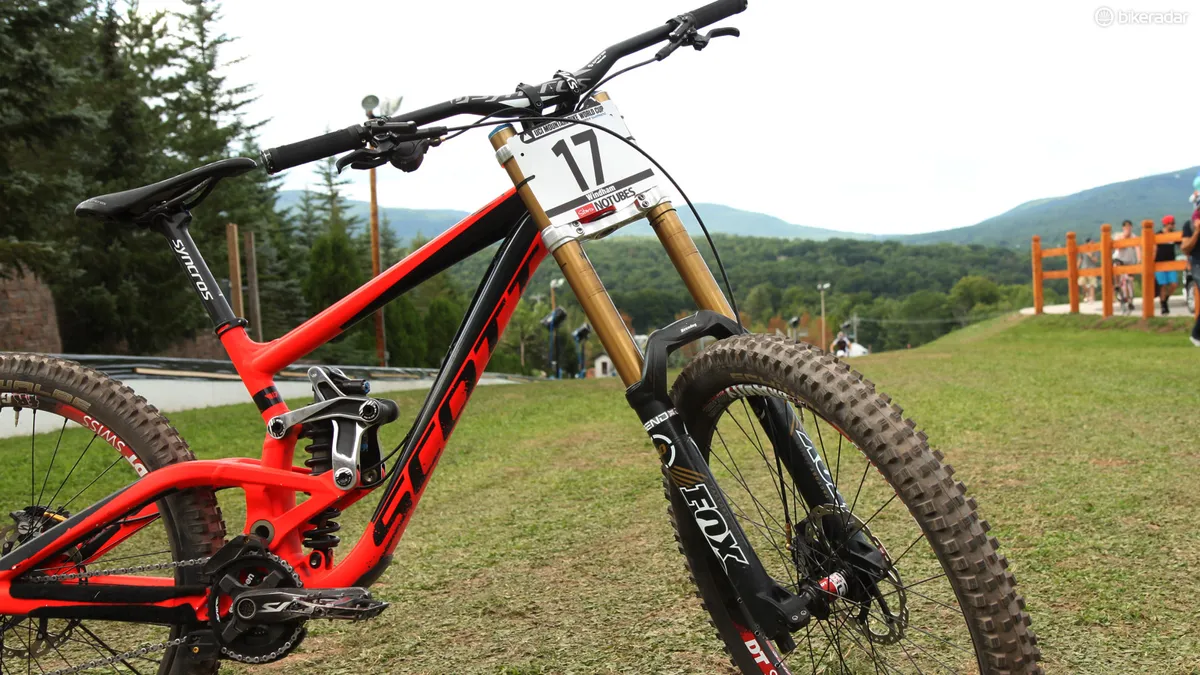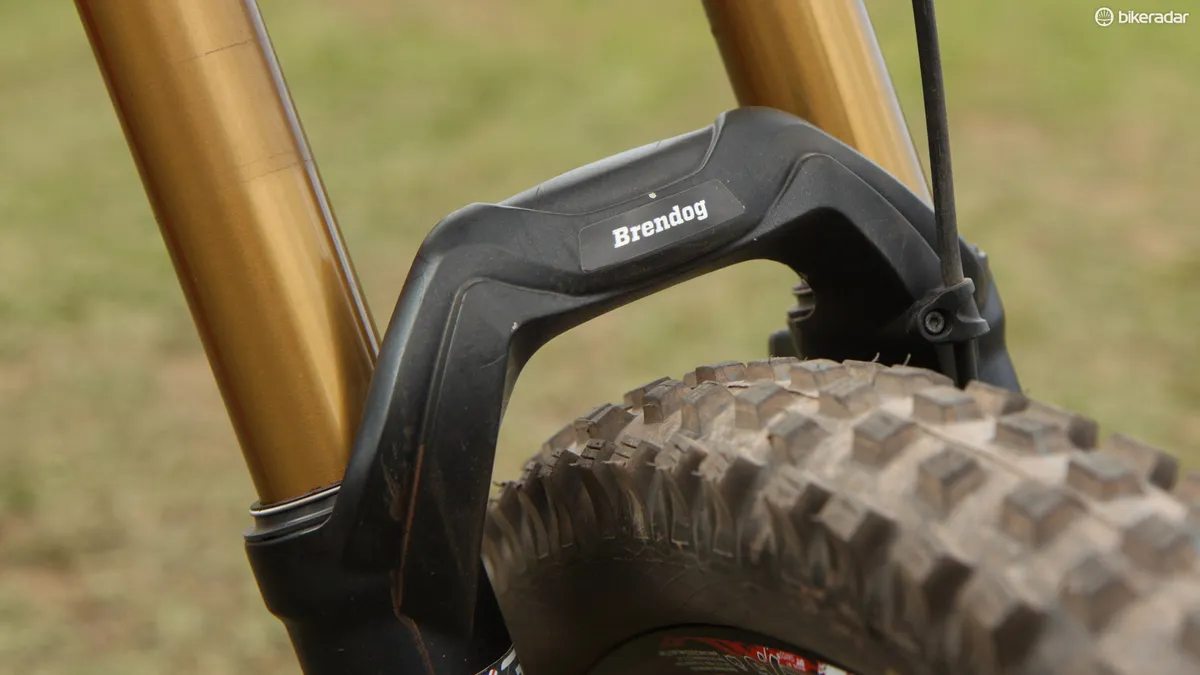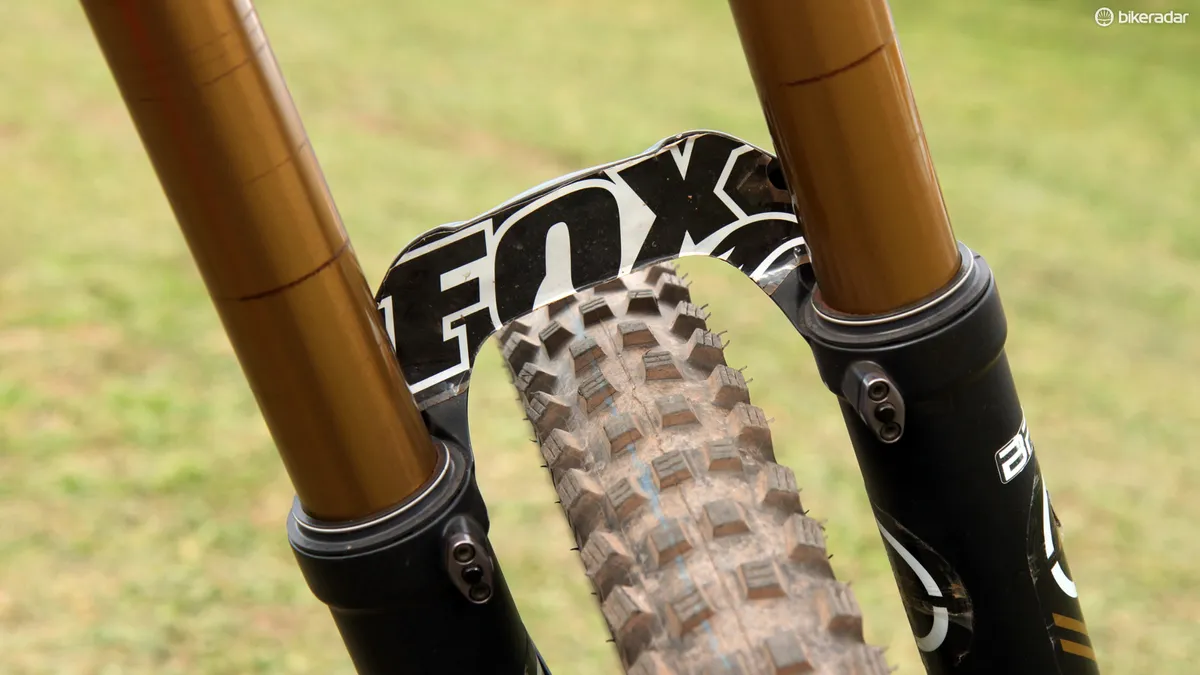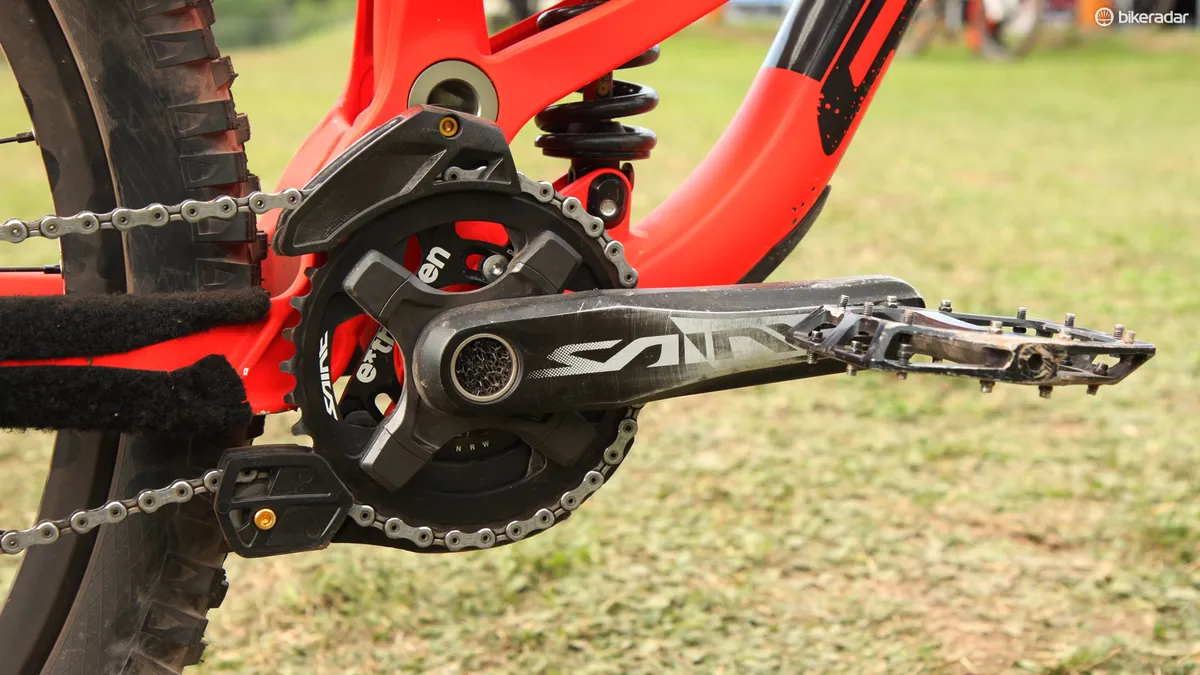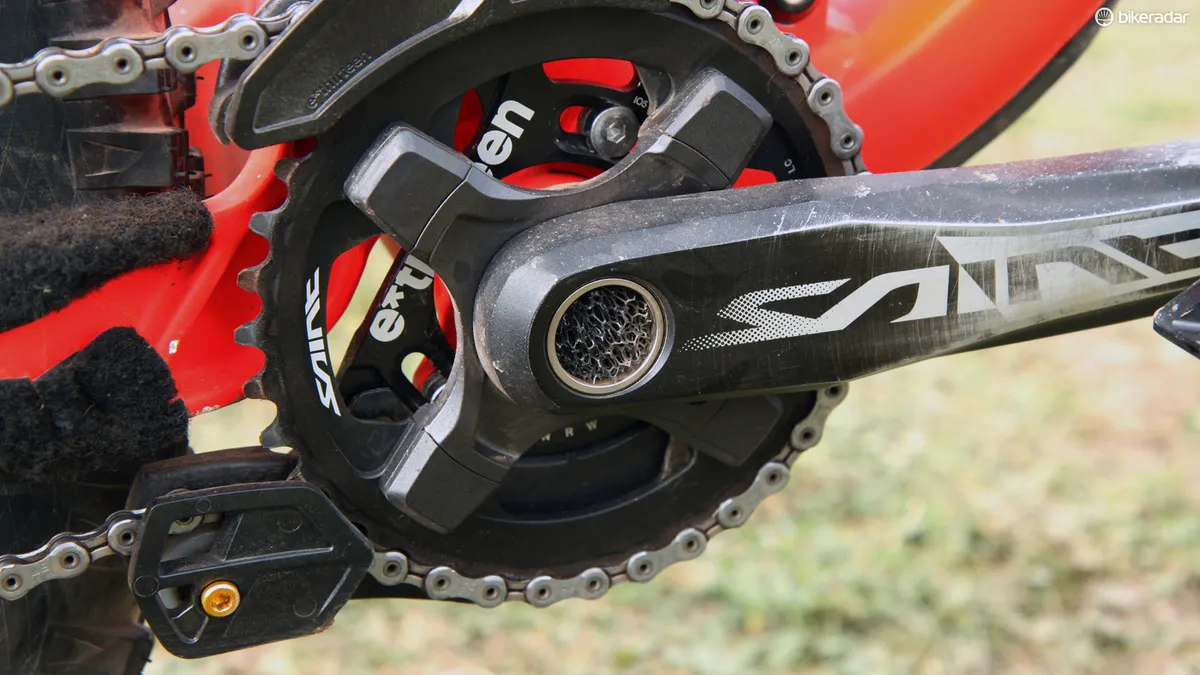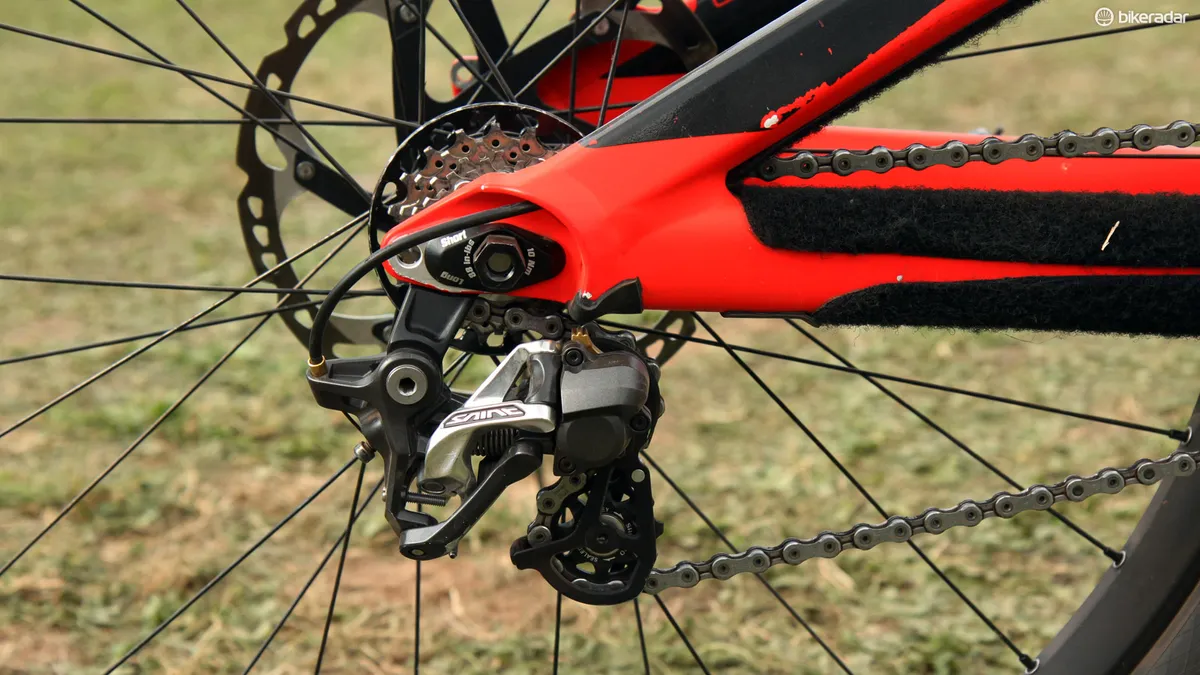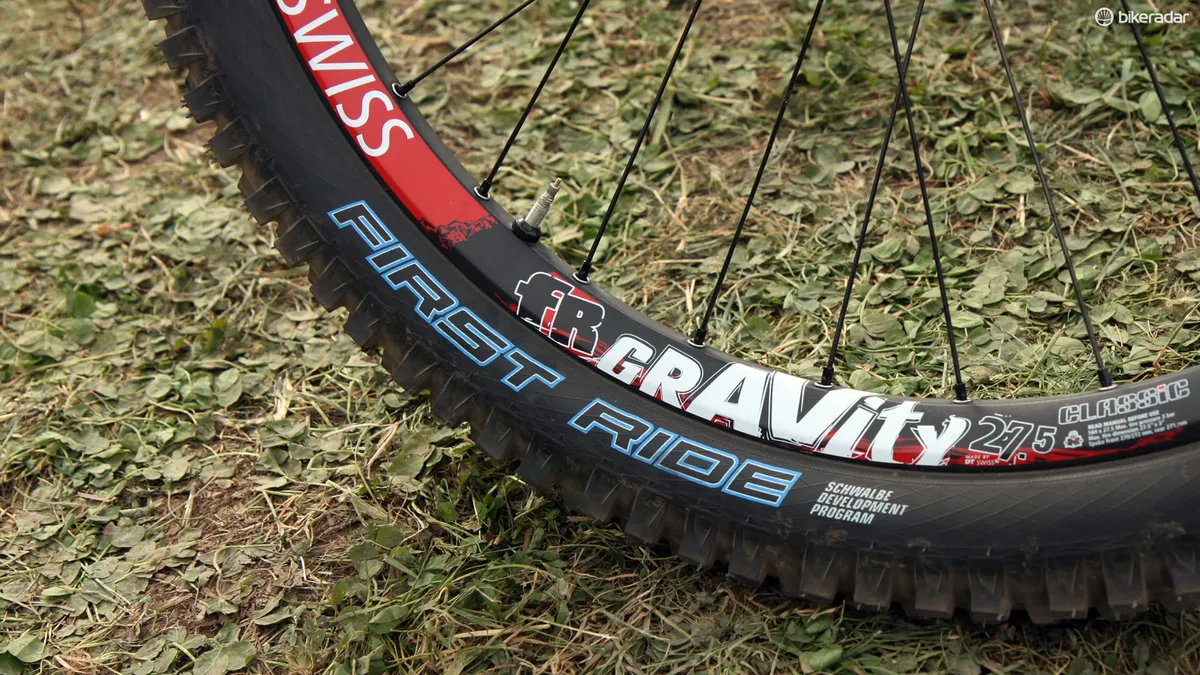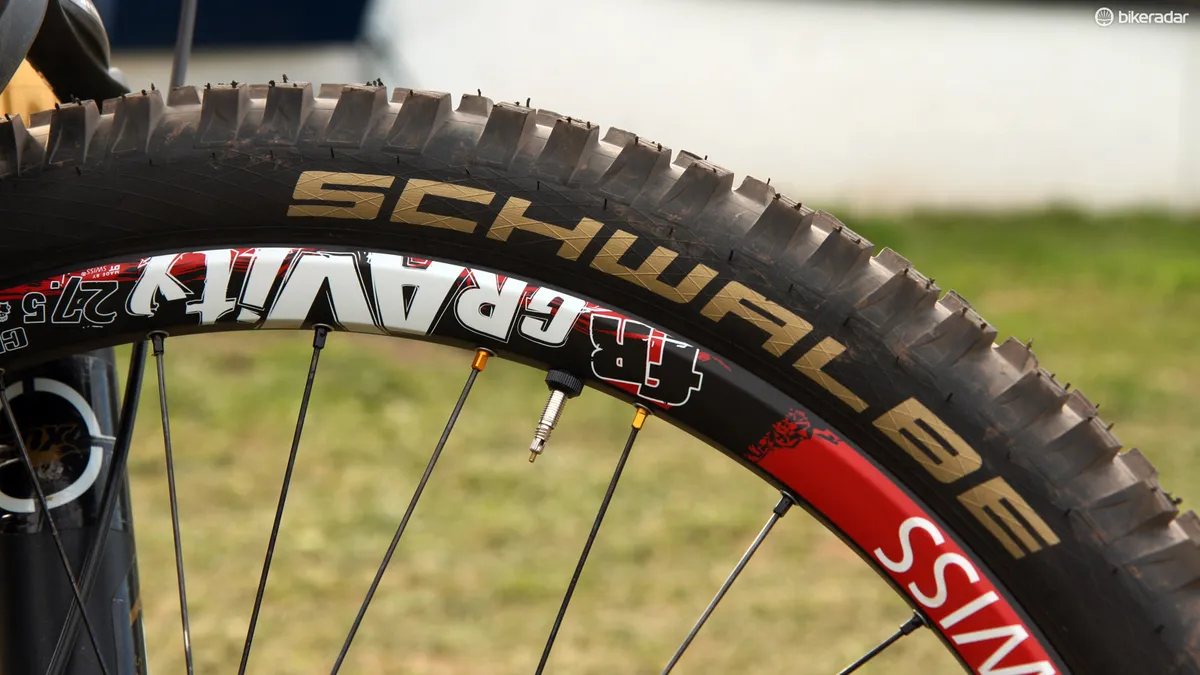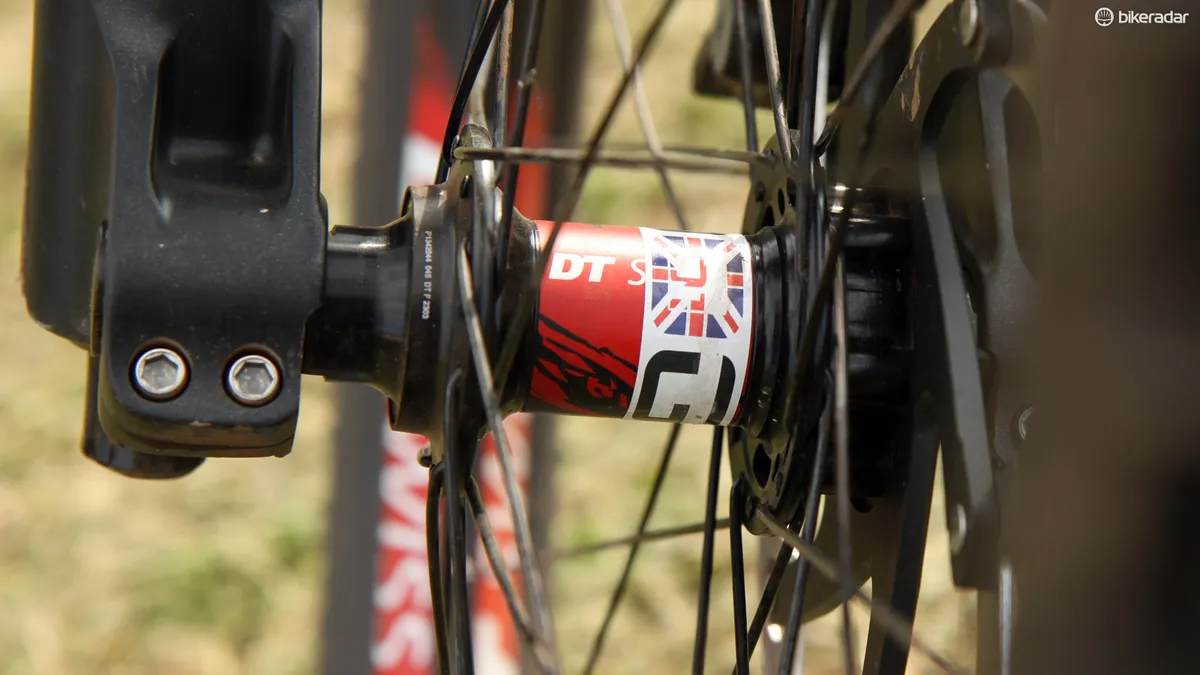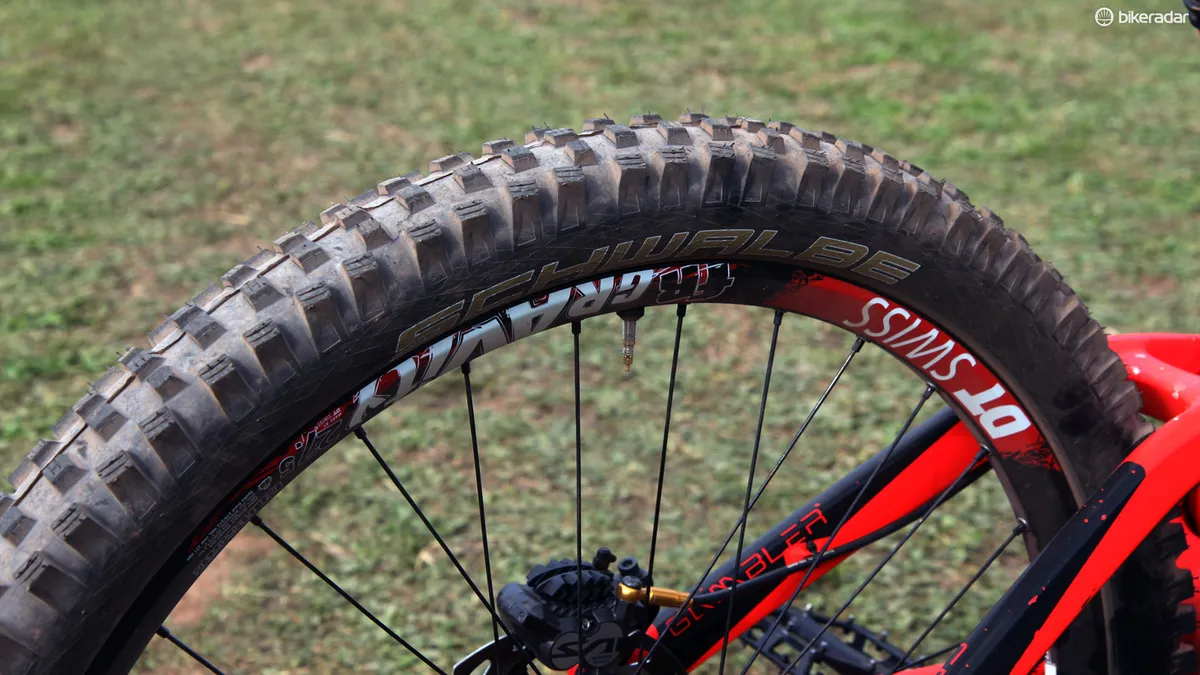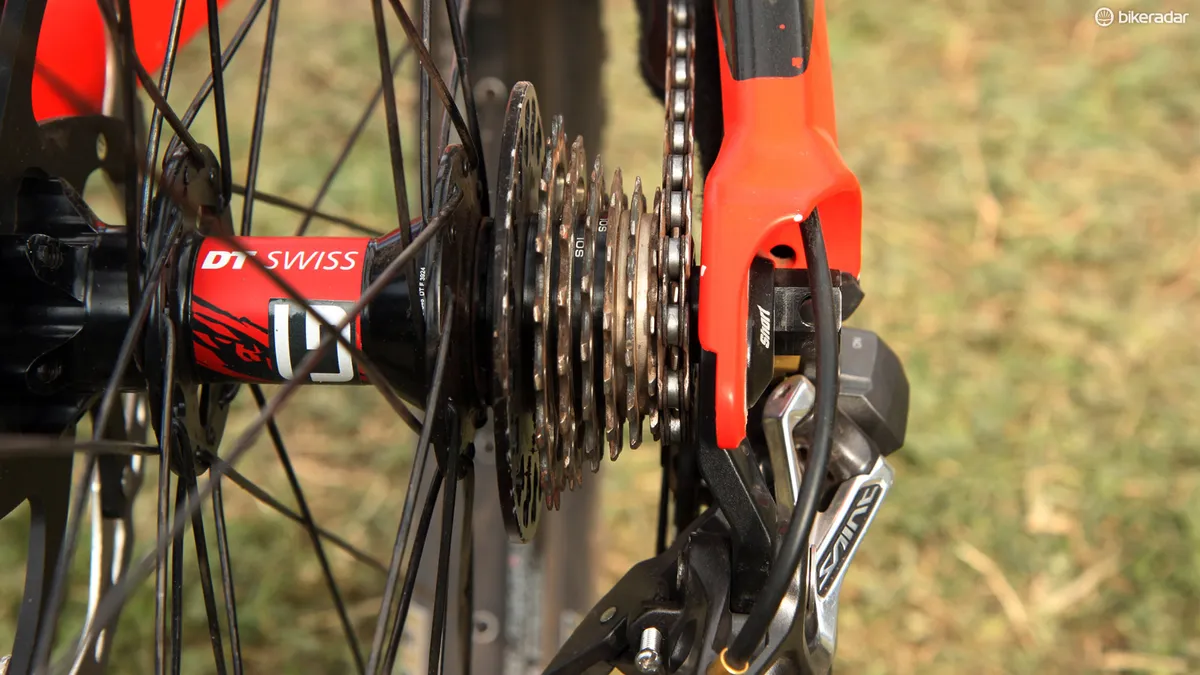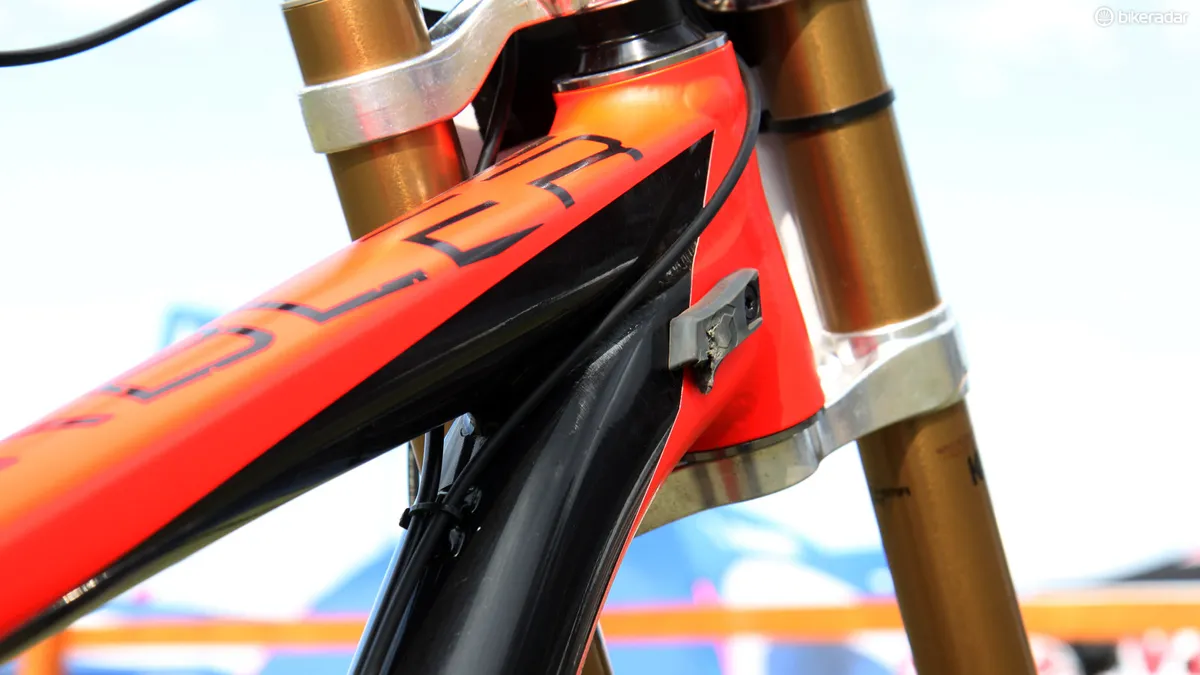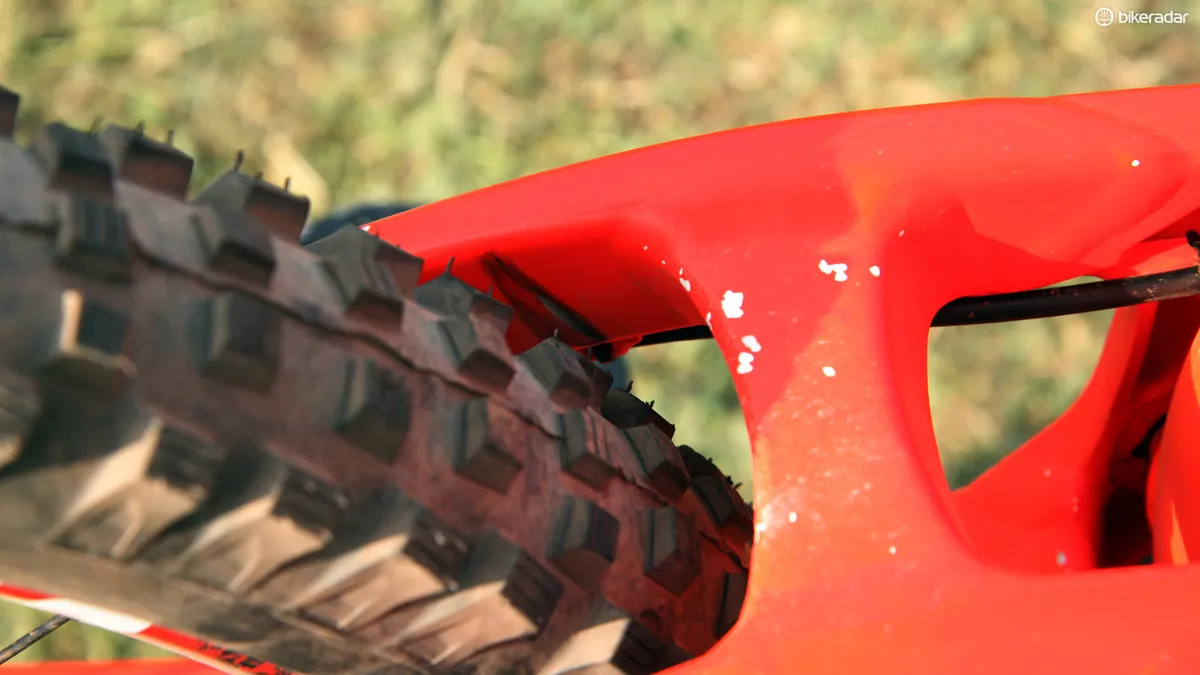Scott Bicycles recently debuted a totally redesigned Gambler downhill frame that incorporates all of the geometry tweaks that once had to be produced custom for star rider Brendan Fairclough (Gstaad-Scott). Even so, Fairclough's rig at the World Cup round in Windham, New York still featured a set of custom fork crowns to help give him an edge on tracks with lots of speed but plenty of flowy corners, too.
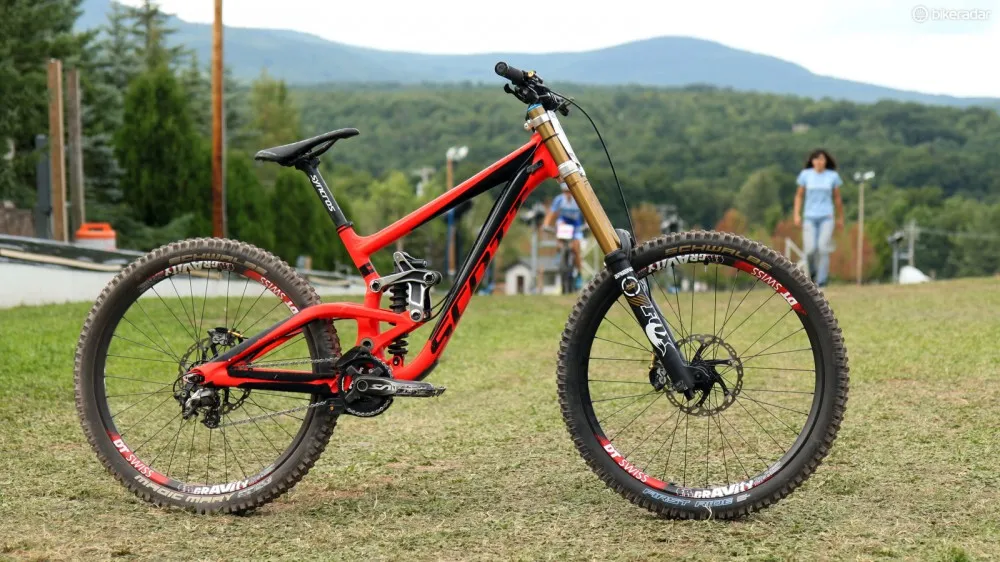
Brendan Fairclough (Gstaad-Scott) got his geometry wish list on the new Gambler but even the new bike has a set of custom fork crowns now, too
Fairclough's new frame may bear a resemblance, in profile, to the old Gambler – but the 210mm-travel alloy platform is in fact a ground-up redesign built around 27.5in wheels. Key for Fairclough is the longer front end, but there's still an enormous range of geometry adjustability available to suit the day's course.
For Windham's short but fast track, Fairclough went with the standard 63-degree head tube angle, a low 343mm-tall bottom bracket, and the longer 440mm chainstay setting. On paper, that would tend to yield quite a long, low, and slack geometry that would benefit all-out speed over the ability to turn. But Fox steps in with a set of custom 40 Float crowns that lend some extra manoeuverability without overly sacrificing stability.
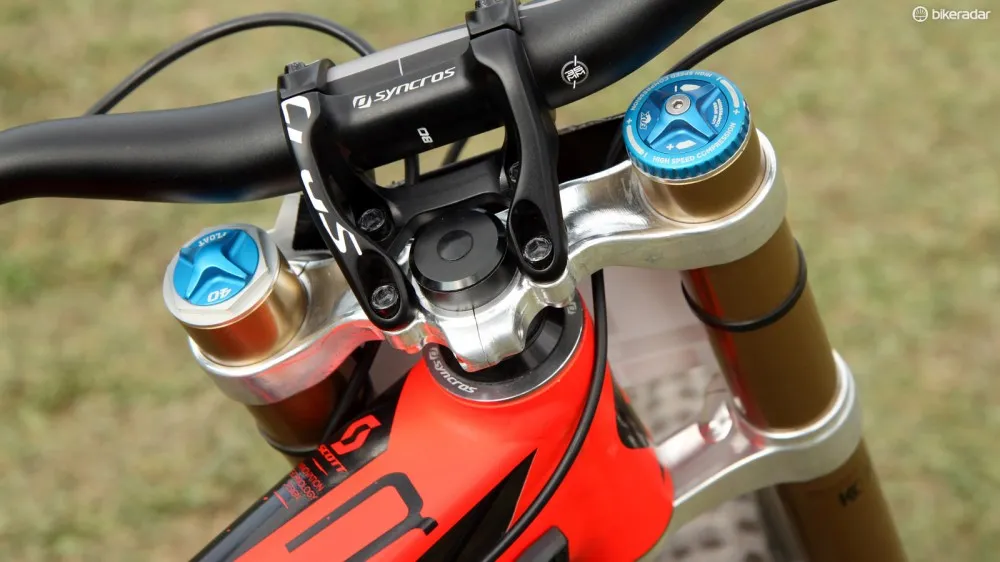
An extra 10mm of offset in the custom crowns speeds up the handling while maintaining a long wheelbase
Compared with the standard 40 Float's forged aluminium crowns, Fairclough's special CNC-machined bits are offset an extra 10mm, which adds to the already-long and confidence-inspiring wheelbase but shortens the trail figure to actually improve front-end nimbleness. It's a trick we've commonly seen on road bikes specially built for cobbled classics such as Paris-Roubaix – and one we expect to see more of in downhill as racers continue to seek out even more tweakability for a given track.
There are a few visual twists, too. Stock frames feature black-anodised shock links but mechanic Ben Vergnaud has taken the time to hand polish them to an immaculately brilliant shine. He told us that he ultimately wants to give the custom crowns the same treatment, but given that they first have to black anodised and then still polished, it'll have to wait until time allows – and it'll be a fair chunk of time, too. According to Vergnaud, just the links took about ten hours to do.
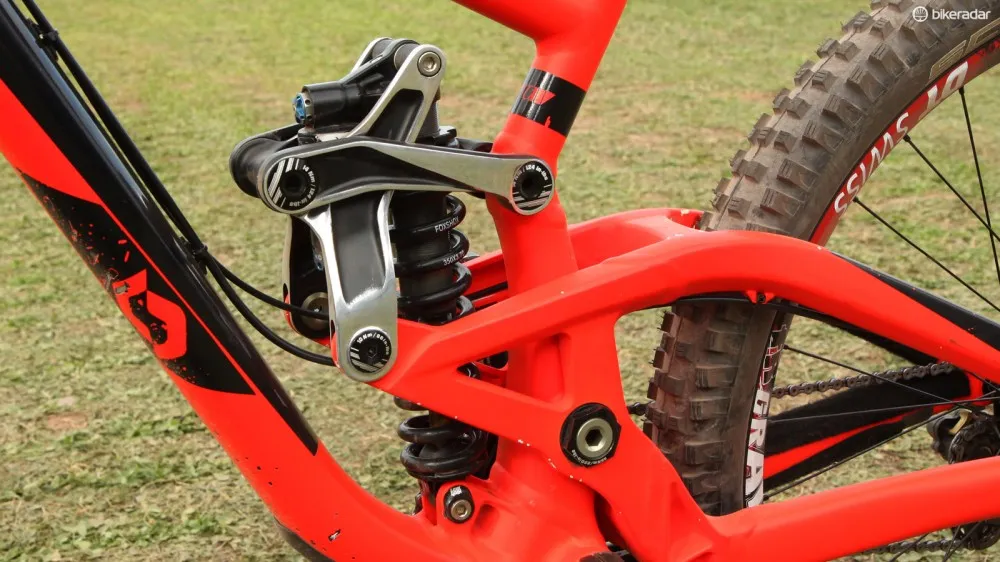
Got an extra ten hours on your hands? Then maybe your Gambler links can look like this, too
Fairclough is among the flat pedal devoted faithful and his signature-edition DMR platforms wear an aggressive pin setup that exaggerates the concave profile for better grip. Vergnaud says Fairclough's pedal preference also influences his suspension setup. Because he needs to more heavily weight the rear end to keep his feet attached, the custom tuned Fox 40 Float fork has a fairly soft tune but the rear is rather firm to give him a more responsive platform. Both ends have a very dramatic ramp-up, too.
That rearward bias produces a more pronounced differential between Fairclough's front and rear tyre pressures, too – although here Schwalbe has come to the rescue with its slick new dual-chamber tubeless system, which Vergnaud sets up on the custom-built DT Swiss Gravity wheelset with a second set of valve holes. With a second air chamber dedicated solely to locking the tyre beads on to the rim, there's more freedom to play with pressures to ideally suit the conditions.

Fairclough is running Schwalbe's new dual-chamber tubeless system, plus a special prototype tyre up front
"It helps more in the rear than the front," Fairclough said. "I used to run about 30psi in the back but now I can do down to 26 or 27."
We weren't able to get the bike on a scale, but Vergnaud says it weighs about 16.6kg (36.6lb) depending on setup.
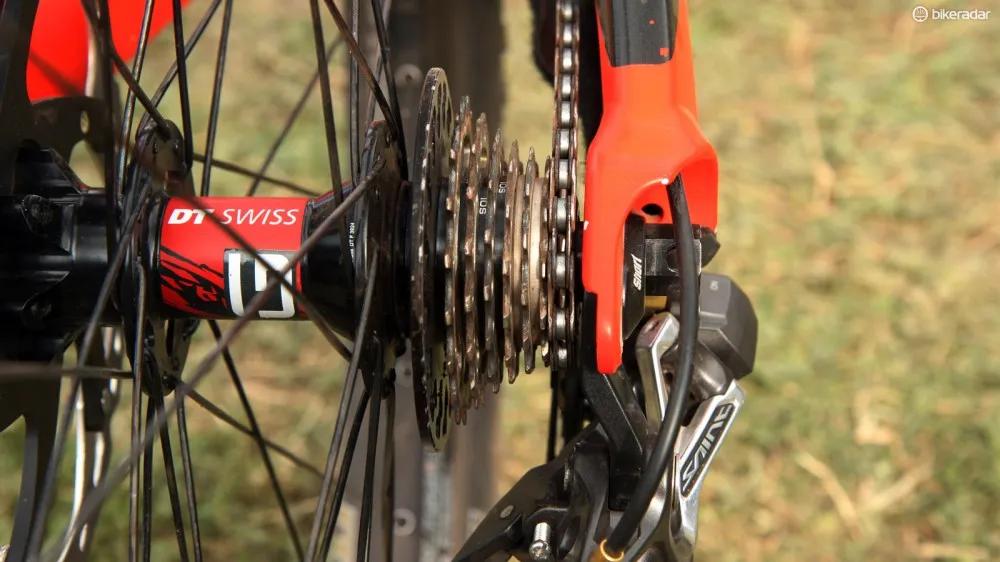
Seven gears is all Fairclough needs
Complete bike specifications
- Frame: Scott Gambler, size large
- Rear shock: Fox DHX RC4, factory tune
- Fork: Fox 40 Float, factory tune, w/ custom +10mm offset crowns
- Headset: Syncros PressFit DH, 63-degree setting
- Stem: Syncros direct-mount, 35mm-diameter clamp
- Handlebar: Syncros DH1.5 alloy riser, 35mm-diameter clamp, 800mm
- Grips: ODI Lock-On Ruffian
- Front brake: Shimano Saint BR-M820 w/ 203mm RT86 rotor
- Rear brake: Shimano Saint BR-M820 w/ 203mm RT86 rotor
- Brake levers: Shimano Saint BL-M820
- Chain guide: e13 LG1+
- Rear derailleur: Shimano Saint RD-M820
- Shift levers: Shimano Saint SL-M820
- Cassette: Shimano Ultegra CS-6700, 11-2-13-14-15-17-19T
- Chain: Shimano Dura-Ace CN-7901
- Crankset: Shimano Saint FD-M820, 165mm, 36T
- Bottom bracket: Shimano press-fit
- Pedals: DMR Vault Fairclough signature edition
- Wheelset: DT Swiss Gravity
- Front tyre: Schwalbe Magic Mary First Ride prototype, 27.5 x 2.35in, w/ Schwalbe/Syntace dual-chamber system, 23psi
- Rear tyre: Schwalbe Magic Mary, VertStar compound, 27.5 x 2.35in, w/ Schwalbe/Syntace dual-chamber system, 26psi
- Saddle: Syncros XR1.0
- Seatpost: Syncros FL1.0


